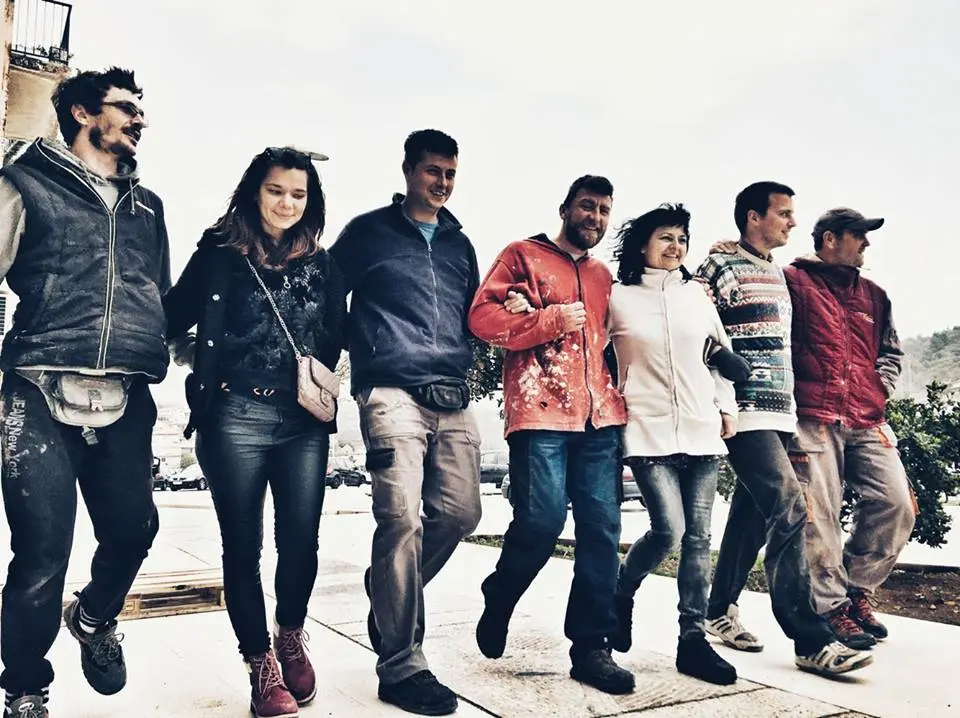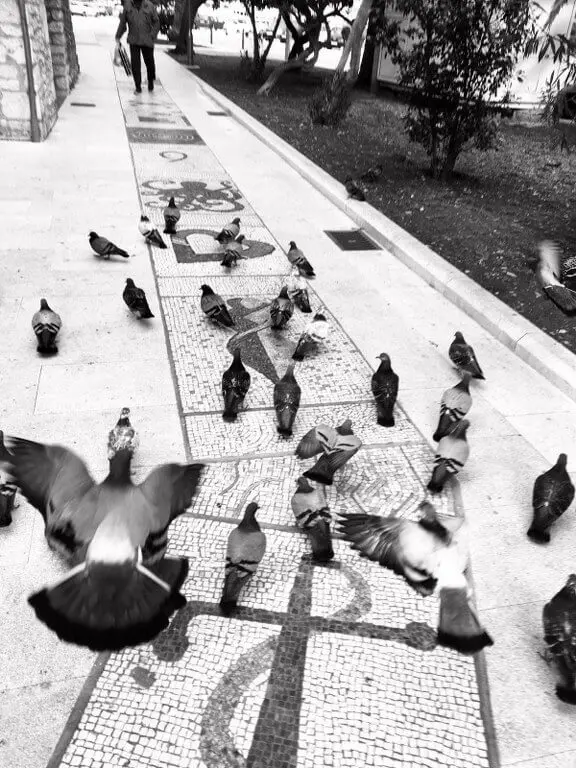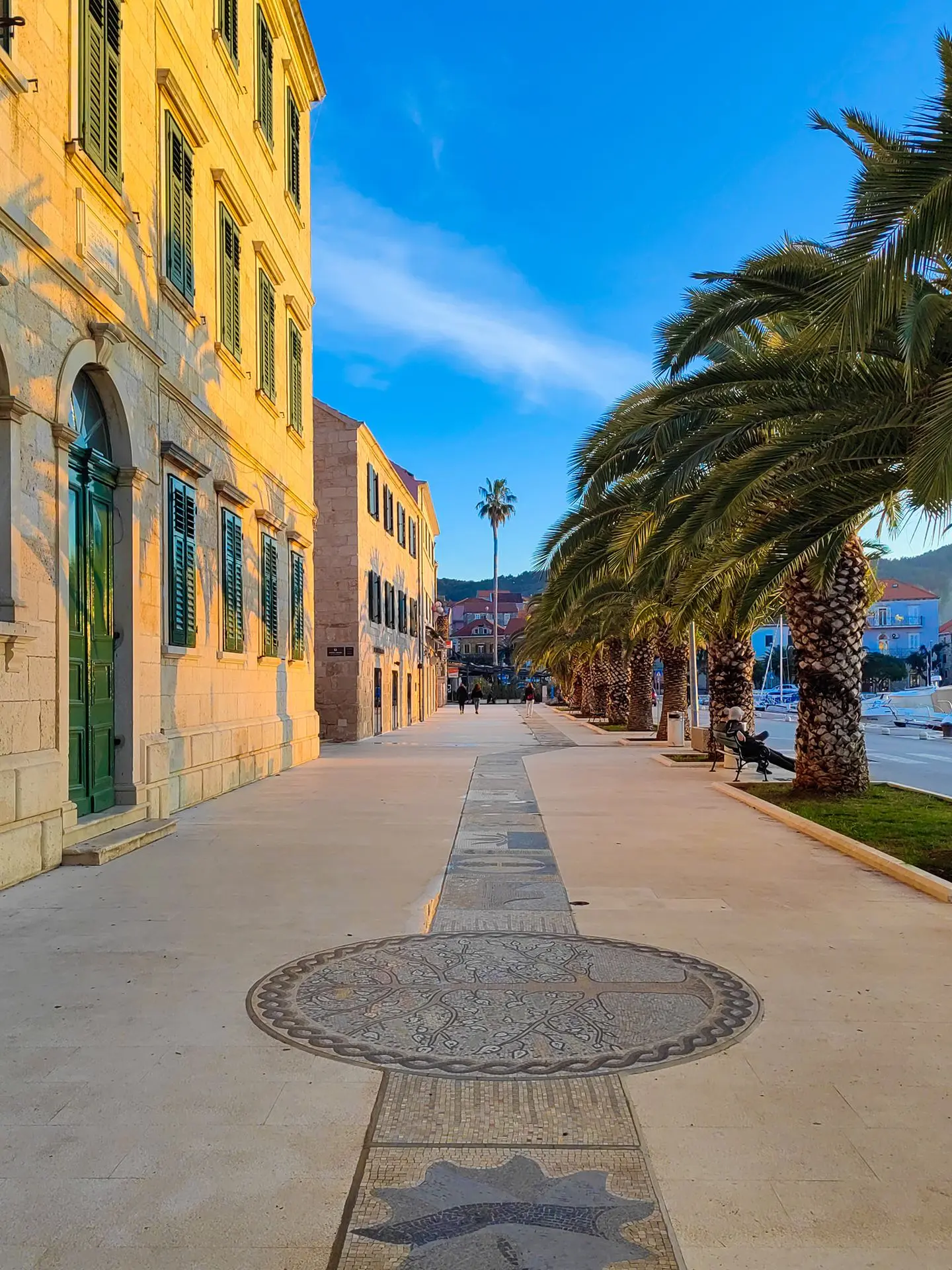Mosaics – Bridges of History and Humanity
Mosaics represent one of the most enduring cultural expressions of human civilization. From ancient temples and Roman villas to contemporary public spaces, they symbolize continuity, beauty, and unity. Each tile carries its own story, and their integration into a whole reflects the way communities and cultures are built over time.
Vela Luka has nurtured this tradition for decades. A key moment came in August 1968, when the town hosted the First International Meeting of Artists Vela Luka (9–31 August). At a time of global division, renowned Croatian and international artists arrived with the idea of artistic unification and created works that marked the cultural history of the town.
Among them were mosaics by prominent artists such as Kulmer, Kožarić, Delimar, Murtić, Omčikus, Kantor, Kotik, Mesagier and others. In addition to individual works, a collective mosaic – a dove with an olive branch, the universal symbol of peace, and the coat of arms of Vela Luka were created and installed in public spaces and promenades. At that time, Vela Luka was a strong and ambitious commune capable of organizing an event of world relevance, transforming the town into an international artistic center.

Launch and Realization of the Luka Mozaika Project
Building on this legacy, the Luka Mozaika project was launched in 2017, with the first workshops held in 2018 in the premises of the former Ambalaža factory under the Association of Visual Arts of Vela Luka. The abandoned industrial site was transformed into a creative atelier and became a meeting point for local residents, children, tourists, and artists from around the world.
In the first phase, more than 150 meters of mosaics were created, using over one million tesserae. The estimated value of the first 100 meters reached approximately €100,000. By 2025, more than 800 meters had been installed in public space, with the goal of creating the world’s longest mosaic promenade by 2030, stretching over 2.5 kilometers.
The production process relies on local limestone, combined with granite and marble in various colors. Stones are cut manually and mechanically, placed on a base of flour and water, and reinforced with cement and steel for durability. A particularly important role was played by Dario Miojević, a local stonemason responsible for cutting 1x1 cm tesserae on the guillotine – thousands of small stone cubes that became the fundamental building blocks of Vela Luka’s contemporary mosaics.
Artists and Collaborators
The project is led by sculptor Ante Marinović, with Ivan Mikulandra as president of the Association and Sandra Baničević as coordinator. The initiative involves local artists, educators, and cultural contributors including Mario Maričić Kiže, Robert Borovina, Mladen Barčot, Chris Ray, Cvito Markov, Ante Gugić Kotarac, Ognjen Padovan, Ivo Cetinić, Miljenko Surjan, Tomislav Šeparović, Ivana Surjan, Damir Telenta, Franka Dragojević, Petar Šeparović, Zoran Mirošević and Anđela Šćepanović.

Along with mosaics, these authors are also behind the creation of seven monumental sculptures that enrich Vela Luka’s public space. Today the promenade unites works of local authors, mosaics created through the Luka Mozaika project, and works of Croatian and international art masters from 1968, creating a unique cultural collage of lasting value.
Community and Economic Support
The Luka Mozaika project has been made possible thanks to the patronage of the Municipality of Vela Luka, the support of local businesses, and donations from private individuals, which have been essential in ensuring financial sustainability and continuity. This public-private synergy shows how art can become a driver of both cultural and economic development.
Luka Mozaika as an Investment in the Future
Luka Mozaika transcends the artistic dimension and represents a strategic initiative for Vela Luka. The project strengthens destination identity, extends the tourist season, brings new economic impact through the use of local resources, and connects the town with international cultural networks.
This project proves that investing in culture and art generates multiple benefits – social, economic, and strategic.
For ELISE, Luka Mozaika is an example of how art, community, and economy work hand in hand, shaping new value and long-term recognition for the island of Korčula.
Conclusion
The Luka Mozaika project connects heritage and contemporary creativity. From the great Croatian and international artists who in 1968 turned Vela Luka into an international art center, to today’s workshops involving both local and international contributors, Luka Mozaika remains a model of how art can serve as a generator of identity, economy, and sustainable development.
For ELISE, Luka Mozaika is living proof that the synergy of artists, community, and economy can create cultural capital of lasting value, with the potential for global recognition.
Last Word
As the main public representative and coordinator of the project, Sandra Baničević emphasizes:
“For me, Luka Mozaika is not just a project, but a life story – my personal daily engagement, but also a collective work of the entire community. Every tile we lay carries the energy of the people who touched it, their story, and their trace. In thousands of small pieces are hidden hours of work, gatherings, laughter, fatigue, but also pride.
When combined, they create something greater than all of us – a work that remains for future generations, proof that something of global significance can be created in a small town. Luka Mozaika is transforming Vela Luka by building an identity rooted in culture, unity, and vision, not only in tourism and seasonal activity. This is our gift to the future – a lasting value woven into stone, and into the hearts of all who are part of this story.
“Did we plan this? No. The idea of creating the world’s longest mosaic came almost by accident, as a joke – but it was a joke that we liked, and bold enough to pursue.
– Sandra Baničević, Project Coordinator of Luka Mozaika

